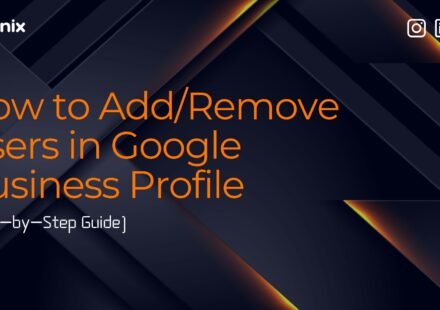Unlock SEO Power: How to Add JSON-LD Schema to Your Website

If you want your website to rank better in search results, stand out with rich snippets, and communicate clearly with search engines, adding JSON-LD schema markup is one of the most powerful strategies you can use.
Schema markup helps search engines like Google, Bing, and Yahoo better understand the content on your site. It acts as a translator between your website’s information and the structured data search engines rely on. Among the various schema formats, JSON-LD (JavaScript Object Notation for Linked Data) has become the recommended standard by Google because it is clean, easy to implement, and does not disrupt your site’s HTML structure.
In this blog, we’ll walk through what JSON-LD schema is, why it matters, and how you can add it to your website step by step.
Understanding JSON-LD
JSON-LD is a unique method of encoding linked data using JSON. It’s a machine-friendly format that helps you communicate structured information about your website to search engines.
Google recommends JSON-LD over other structured data formats like RDFa or microdata because it is:
- Easy to Maintain: Separately stored from your HTML code.
- Less Error-Prone: No need to embed schema into every HTML element.
- Better Flexibility: Can be applied to almost any type of website content.
In short, JSON-LD makes it simpler to tell search engines exactly what your content is about.
Step-by-Step Guide to Adding JSON-LD Schema
Here is a quick guide to adding JSON-LD to your website.
Step1: Identify the Right Schema Type
First, determine what type of structured data is relevant to your page. Some common schema types include:
- Article / BlogPosting – For blog posts and news articles.
- Organization / LocalBusiness – For business details like name, address, and phone number.
- Product – For eCommerce websites to describe products, prices, and reviews.
- FAQ – For frequently asked questions pages.
- Event – For conferences, concerts, and other events.
- Recipe – For cooking instructions and food-related content.
You can browse the full list of schema types at Schema.org
Step 2: Generate JSON-LD Markup
You don’t have to write JSON-LD manually. There are several free tools that can generate schema code for you, such as:
- Google’s Structured Data Markup Helper
- Merkle’s Schema Markup Generator
- TechnicalSEO.com’s Schema Generator
Example: Suppose you’re writing a blog post titled “10 Best Hiking Trails in India”. You’d choose the Article schema and generate something like this:
<script type=”application/ld+json”>
{
“@context”: “https://schema.org”,
“@type”: “BlogPosting”,
“headline”: “10 Best Hiking Trails in India”,
“description”: “A detailed guide on the best hiking trails across India for adventure lovers.”,
“author”: {
“@type”: “Person”,
“name”: “John Doe”
},
“publisher”: {
“@type”: “Organization”,
“name”: “Adventure Blog”,
“logo”: {
“@type”: “ImageObject”,
“url”: “https://example.com/logo.png”
}
},
“datePublished”: “2023-07-01”,
“dateModified”: “2023-07-05”
}
</script>
Step 3: Add the Markup to Your Website
Once you have the JSON-LD script, place it within the <head> section of your HTML page. For example:
<!DOCTYPE html>
<html lang=”en”>
<head>
<meta charset=”UTF-8″>
<title>10 Best Hiking Trails in India</title>
<script type=”application/ld+json”>
{
“@context”: “https://schema.org”,
“@type”: “BlogPosting”,
“headline”: “10 Best Hiking Trails in India”,
“description”: “A detailed guide on the best hiking trails across India for adventure lovers.”,
“author”: {
“@type”: “Person”,
“name”: “John Doe”
},
“publisher”: {
“@type”: “Organization”,
“name”: “Adventure Blog”,
“logo”: {
“@type”: “ImageObject”,
“url”: “https://example.com/logo.png”
}
},
“datePublished”: “2023-07-01”,
“dateModified”: “2023-07-05”
}
</script>
</head>
<body>
<!– Page Content –>
</body>
</html>
You can also add it before the closing </body> tag, but placing it in the <head> ensures it loads quickly and is easily accessible to crawlers.
Step 4: Validate Your JSON-LD
Before publishing, always validate your schema markup to avoid errors. Google provides two tools for this:
Google Rich Results Test
– To see if your page is eligible for rich results.
Schema Markup Validator
– To ensure your JSON-LD follows Schema.org standards.
Simply paste your code or URL into these tools and check for warnings or errors.
Step 5: Track Results in GSC
Once your JSON-LD is live, give Google some time to crawl and index your updated pages. Then, head over to Google Search Console:
- Navigate to the Enhancements section
- Look for categories like Products, FAQs, or Articles
Track any issues and check how many pages are eligible for better results.
Best Practices for JSON-LD Schema
You need to follow these tips to get the most out of schema markup.
- Markup Visible Content: Don’t add structured data for information users can’t see on your page.
- Stay Updated: Schema.org updates types and properties frequently. Keep your markup up-to-date.
- Avoid Overstuffing: Do not add every possible schema type. Use the most relevant schema only.
- Use the Correct Placement: Put your JSON-LD in the <head> for clarity, although the <body> also works.
- Integrate Multiple Schemas if Required: You can add several schema types on the same page if needed.
Conclusion
Implementing JSON-LD schema markup is no longer just an advanced SEO trick; it’s a necessity for websites that want to stay competitive in search. Adding JSON-LD schema to your website is one of the smartest SEO steps you can take. It improves how search engines interpret your content, increases visibility with rich snippets, and boosts your chances of attracting more clicks.
If you haven’t added a schema to your site yet, now is the perfect time. Start small, implement schema on your homepage or blog posts, and expand gradually to cover products, services, and FAQs. Over time, you’ll notice improved click-through rates, stronger search visibility, and a website that speaks the same language as search engines.
Ready to boost your SEO and stand out in Google search? Start adding JSON-LD schema markup to your website today and watch your rankings improve. If you’re not sure where to begin, reach out to Qtonix for expert help.
FAQs
The best place to add JSON-LD is inside a <script type=”application/ld+json”> tag in the <head> section of your HTML. However, it will also work if placed in the <body>.
Not necessarily. If you use WordPress, Shopify, or another CMS, plugins and apps can generate and insert JSON-LD for you. You can also use free online tools to generate the code and then paste it into your site.
Yes, you can. For example, a blog post can have both Article schema and FAQ schema. Just make sure each schema type is relevant to the content on the page.
Yes. Google, Bing, Yahoo, and other major search engines support JSON-LD. Since Google explicitly recommends it, JSON-LD is considered the best choice for structured data.
Written by Adam Gibbs
Adam is a skilled SEO content expert with a proven track record of crafting high-quality, keyword-rich content that drives traffic, engages readers, and ranks on search engines. With 10+ years of experience in digital marketing and content strategy, Adam specializes in creating blog posts, website copy, and marketing materials tailored to both audience needs and SEO best practices.
Related Posts
A Complete Guide to Adding and Managing Users in Google Analytics 4
How to Add a User to Google Ads: Standard vs. Admin Access Explained
- All Posts
- SEO

Table of Contents Book Intro Call Case Studies Share: Related Guides: Related Posts Step-by-Step Tutorial: How to Share Google Tag...

Table of Contents Book Intro Call Case Studies Share: Related Guides: Related Posts Step-by-Step Tutorial: How to Share Google Tag...

Table of Contents Book Intro Call Case Studies Share: Related Guides: Related Posts Step-by-Step Tutorial: How to Share Google Tag...

Table of Contents Book Intro Call Case Studies Share: Related Guides: Related Posts Step-by-Step Tutorial: How to Share Google Tag...





